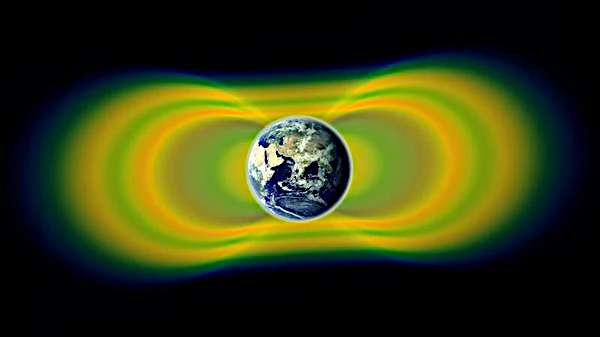
NASA's Twin Van Allen Probes, launched on August 30, 2012, revealed a new radiation belt around Earth. The mission discovered a previously unknown third radiation belt within these dangerous regions of space. The Van Allen probes consist of two identical satellites, strategically separated in space to better detect events, map this region, catalog high-energy particles, and track magnetic waves escaping the belts.
The Magnetosphere was described in 1958 by James Van Allen (1914-2006) during measurements made by Geiger counters onboard the first American satellite, Explorer 1. It was at this time that this space zone, known as the Van Allen Belt, was discovered.
The Van Allen Belt, affected by solar storms, consists of two distinct parts of radiation with different characteristics. The first, closest to Earth, is located between 700 and 10,000 km in altitude and is mainly composed of high-energy protons. The second, the larger outer part, is located between 13,000 and 65,000 km in altitude and is composed of high-energy electrons. This discovery shows the dynamic and variable nature of our planet's radiation belts. Indeed, this third belt persisted for four weeks and then disappeared, perhaps annihilated by another shock wave, that of the solar eruption of August 31, 2012, according to Daniel Baker, principal investigator of REPT at the University of Colorado.
The two Van Allen Probes have roughly the same eccentric orbit. These orbits cover the entire radiation zone of the belts. The data collected by the first dual spacecraft to analyze the Van Allen Belt were published on Thursday, February 28, 2013, in the journal Science. The REPT (Relativistic Electron Proton Telescope) instrument onboard the probes revealed a third distinct structure of the Van Allen Belt with a second empty space zone between the two outer belts. Scientists observed the third belt for four weeks while a powerful shock wave struck the magnetosphere. The observations were made by scientists from LASP, NASA's Goddard Space Flight Center, Los Alamos National Laboratory, and the Institute for the Study of Earth at the University of New Hampshire.
Most of the solar energy is released into space as electromagnetic radiation, mainly visible light, but the Sun also emits a stream of charged particles known as the solar wind. This solar wind strongly interacts with the magnetospheres of planets and helps clean the interplanetary space by ejecting gases and dust out of the solar system.
Solar eruptions continuously send high-energy particles into space, and occasionally, a bubble of radioactive and overheated plasma reaches Earth. All energetic particles emitted by the Sun toward Earth circulate at high speed and are continuously brought back toward the poles of the magnetosphere. Thus, the solar wind never directly strikes the Earth's surface.
This magnetic bubble shields us from deadly solar radiation. In the Van Allen Belt, energetic particles (protons and electrons) organize themselves around Earth according to the strength of the magnetic field. This magnetic field acts as a shield, deflecting the electric current of the solar wind, which then flows outside the magnetosphere. Even short-term exposure to the densest fluxes of the Van Allen radiation belt is fatal for humans.
Few humans have been on the other side of the magnetosphere facing deadly solar radiation; only the Apollo astronauts who went to the Moon crossed the Van Allen Belt. Even with protective shielding, the astronauts' exposure was limited to less than an hour.